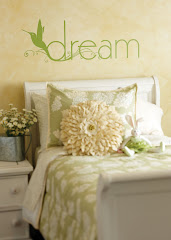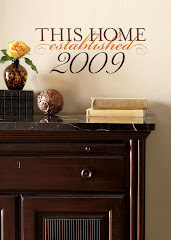Here are a few other pointers:
- In a living room, around the sitting area, hang for seated viewers. In a hallway hang for standing viewers. In a child's room, hang pictures lower than in an adult's room.
- Hang pictures flat against the wall, not tipped out at the top. No hooks or wires should show. The size of the picture or group of pictures should relate to the size and shape of the wall space on which they hang. A small picture for a small area and vice-versa.
- If hanging more that one picture together, a general rule is to have the lower or upper edges of each picture the same distance from the floor, or in other words lined up with each other. For example, the lower edge of a medium sized picture should be in line with the lower edge of a large picture.
- When grouping pictures, an odd number of pictures hung together is more pleasing to the eye than an even number. For example a grouping of 3, 5 or 7 instead of 2 or 4.
- Consider the structural lines of the wall or space. In a rectangular space, keep the pictures in a line, not one above the other. If pictures are on an angle, the eye follows the angle upwards. This could be unsettling if there is no reason for the eye to be directed upwards.
- One exception is hanging pictures on a wall along stairs. Here the structural lines are on an angle so pictures would be hung one slightly higher than the next, on an angle.
The safest procedure in deciding where to hang a picture is to cut a piece of paper the size and shape of the picture. Tape this lightly to the wall in a test position and study the results. Move the paper around until you are sure of the best placement.
- Does it relate well to the furniture below it?
- Does it seem balanced in its position?
- Does it seem to float in space or relate to the area it is in?
- Can you see the picture comfortably without craning your neck while seated in various parts of the room?
Work toward variety in hanging pictures by placing one big picture on one wall, a grouping of two or three on another and possibly a large grouping of quite a few smaller ones on still another. A single picture hanging by itself is often quite effective. However, a room in which all pictures are hung singly can look a bit boring.
When grouping pictures, harmonize the grouping by keeping them within an imaginary rectangular or square. The spacing between frames is important. Too little space detracts from each picture; too much space loses the cohesion of the grouping. No more than three inches between pictures is suggested.
A common denominator or something the same in the grouping will give unity. It could be the same medium such as all photographs, prints or watercolours; the same frames or matting; or the same subject such as all landscapes, people or animals. However, be careful not to have so much unity that the grouping becomes uninteresting.
Other things to consider when hanging pictures include:
- Round or oval-framed picture are best placed near the centre of the grouping because they attract the eye first.
- Relate the size of the wall area to the size of the picture. For example a small wall area in a bathroom would be best with a small picture.
- Place pictures at eye level. In a sitting area they would be lower than in a hall way where people would view them from a standing position.
- Keep hooks and wires from showing. Have the pictures hung flat against the wall, not tipped out at the top.
Getting pictures, words, mirrors, etc. to be "just right" takes time but if done well, they will show off themselves and the room!
information from: http://www.homefamily.net/index.php/categories/housing/tips_on_hanging_pictures




